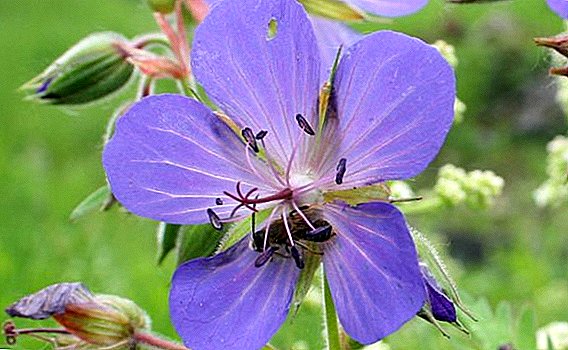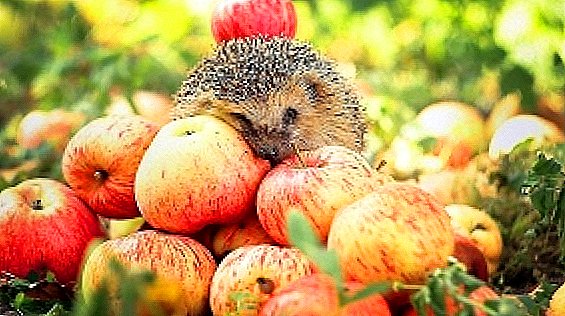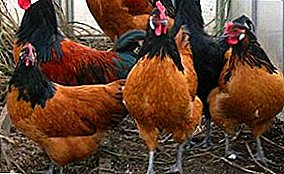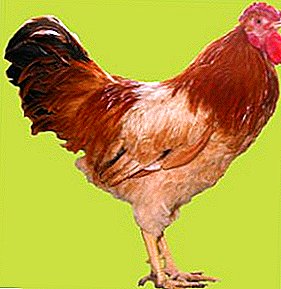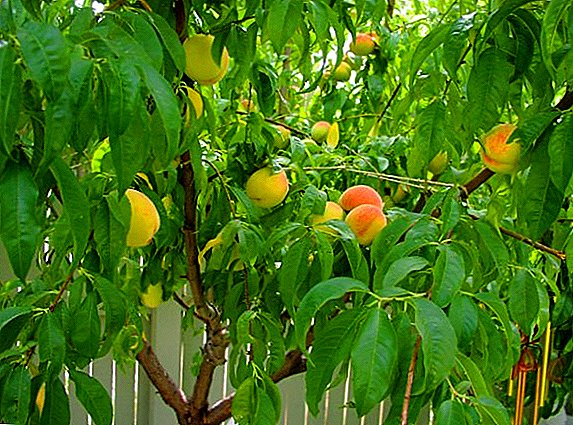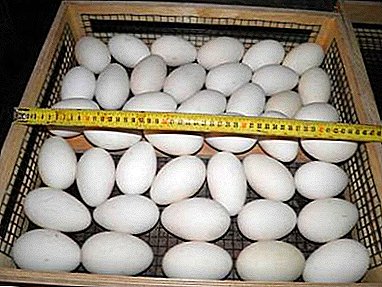
Villagers have long been aware of how poultry are bred and what care should be provided. The experience of mankind increases the number of birds on chicken farms and estates, in private houses and even apartments.
Nowadays, the incubation of geese is recognized as a very difficult task, which not everyone can master. In this article we will discuss the subtleties of incubating goose eggs at home.
What it is?
 Incubation refers to the natural process of the development of animals that lay eggs. These include birds, lizards, amphibians, reptiles, worms. It can occur at a certain temperature or climatic conditions.
Incubation refers to the natural process of the development of animals that lay eggs. These include birds, lizards, amphibians, reptiles, worms. It can occur at a certain temperature or climatic conditions.
A few words about the features of goose eggs. This product contains a huge amount of nutrients. It contains vitamins of group B, as well as A, D, E, K. The use of such eggs is a great influence on the work of the brain and genitourinary system. Specific substances found in eggs completely cleanse the body of toxins and help reduce fat on the walls of blood vessels. They also have a good effect on memory and vision.
During pregnancy, it is important to introduce such eggs into the diet of a woman, since they will contribute to the development of the normal nervous system in the baby.
The yolk contains lute, recognized as a powerful antioxidant. It allows human cells to rejuvenate properly and significantly slows down the aging process.
Instructions for incubating goose eggs at home
Selection and storage
Eggs used for incubation, stored in a cool, dry place. The temperature should be within 8-12 degrees, and the humidity level in the range of 75-70%. Keep them standing in a horizontal position, from time to time turning. The shelf life of goose eggs after demolition does not exceed 15 days. You can easily determine the freshness of the product. Matte surface indicates the presence of a special protective film.
It once again protects the embryo. For the selection of eggs increasingly use ovoskop. When laying in the incubator, it is important to review each product. Those in which the pug of air is located at the blunt end, are not suitable for incubation. The incubation qualities depend on the feeding of the birds. If she fed on quality food, then the viability of the embryo would be top notch.
Disinfection
 In the tank for washing eggs pour warm water, which has a temperature of 30 degrees. If it is lower, it can lead to the fact that the eggs will skukozhatsya.
In the tank for washing eggs pour warm water, which has a temperature of 30 degrees. If it is lower, it can lead to the fact that the eggs will skukozhatsya.
In warm water, you can add potassium permanganateand then put the eggs into the solution. They need to keep no longer than 5 minutes. During this time, you can completely kill the microbes on the surface. Clean product should be laid out on a soft cloth and allowed to dry.
To wash or not to wash?
Cleaning eggs is a must before laying in the incubator. You can use formaldehyde vapors or potassium permanganate.
Stages of embryo development
During the entire incubation period, the embryo passes through several stages.:
- The first stage lasts from 1 to 7 day. During this time, the formation of organs of a goose occurs, the heart begins to beat and breathing increases.
- From 8 to 18 day - the second stage. At this stage bones are formed.
- From the 18th day - the third stage.
- The fourth stage 28-30 day, namely - the withdrawal of offspring.
Terms and temperature conditions
The incubation period for goose eggs is 30 days.
Regarding the mode of incubation of goose eggs in a foam incubator: it should be heated to 38 degrees. It is important to close all openings in order to create a comfortable temperature. From the 20th day the egg begins to release heat, so the temperature drops. Eggs located in the center, shift in the corners. The automatic incubator for goose eggs is also put on the 38 degree mode (how to make the incubator yourself, described here).
Table with the schedule of bookmarks and temperature in the incubator
From the table you will find out how many goose eggs lie in the incubator.
| Timing | Humidity | Temperature |
| 1-2 day | 70% | 38 |
| 2-4 day | Spraying + irrigation | 38 |
| 5-10 day | Decreased amount of moisture | 37 |
| 10-27 days | Ventilation | 37 |
| Before hatching | Reversal | 37 |
| The final stage | 90% | 37 |
Laying goose eggs in the incubator is carried out strictly according to the rules. Larger eggs are better placed vertically - so they will maintain the desired temperature and humidity regime. To warm the eggs better, they need to be turned. Make a mark so as not to get confused.
- indoutok;
- quails;
- guinea fowl;
- turkeys;
- weft;
- ostriches;
- peacocks;
- pheasants;
- musk duck.
Translucent
 The first scanning is carried out after 9 days. With the right development of the embryo, you can see the circulatory system, but the embryo itself will not be noticeable. Often it sinks deep into the yolk. If the temperature regime is broken, then during translucence, there will be a noticeable lag in development - the circulatory system will be pale, underdeveloped.
The first scanning is carried out after 9 days. With the right development of the embryo, you can see the circulatory system, but the embryo itself will not be noticeable. Often it sinks deep into the yolk. If the temperature regime is broken, then during translucence, there will be a noticeable lag in development - the circulatory system will be pale, underdeveloped.
At the first inspection, all eggs with dead embryos should be removed from the incubator. Subsequent radiography makes it clear how exactly the yolk is located, how mobile it is and what kind of air chamber it has. If the subshell membranes are intact, and the state of the protein and yolk is normal, this will speak about the normal development of the goose.
Possible mistakes and how to avoid them
Farmers who do not have much experience and knowledge can make mistakes when breeding geese. It is important to strictly follow the rules in order to avoid any negative consequences:
- Temperature drops. If the temperature regime changes dramatically, this will lead to overheating or overcooling. Cooling goose eggs during incubation, as well as overheating, lead to the death of embryos. You should buy a generator if there is a danger of turning off the light for a long time.
- Incorrect moisture values. It is important to ensure that the humidity inside the goose egg incubator is up to par. Be sure to raise or lower it in time.
- Excessive control of each process. The fact that you need to keep an eye on eggs is not a secret. It is important to irrigate and turn them over, however, the frequent opening of equipment can lead to failures in the temperature regime, and the result of such actions may be the death of individuals.
- Inefficient savings. A large number of novice farmers are accustomed to turning off the light or creating subdued lighting. Here it is important not to overdo it, since all this can lead to the fading of the embryos. In no case should you extinguish the light or change the mode.
- Early breeding. When the goslings hatch, give them time to stay in the incubator until it is completely dry. If you put them in a brooder, they can be supercooled and die.
First steps after elimination
 The survival rate of chicks depends on cohesion. You must provide the goslings with plenty of water. Also do not forget about the regular change of litter. Newborn babies should grow in a clean and comfortable environment. From the moment of independent existence begin feeding individuals. In the first week you need to give food 6 times a day.
The survival rate of chicks depends on cohesion. You must provide the goslings with plenty of water. Also do not forget about the regular change of litter. Newborn babies should grow in a clean and comfortable environment. From the moment of independent existence begin feeding individuals. In the first week you need to give food 6 times a day.
It is preferable to cereals, and then gradually add to them greens, chopped eggs, clover, nettles. Food must be moist and crumbly - the nasal passages of young animals should not be blocked.
Conclusion
As you see it will take some experience, patience and time to grow healthy geese. We have set forth the general requirements for the incubation process, but we should not forget that they may differ somewhat, taking into account the chosen type of geese.
Following this scheme, you will have a healthy brood for sale or for yourself. Everyone has their own plans for what to do next.



